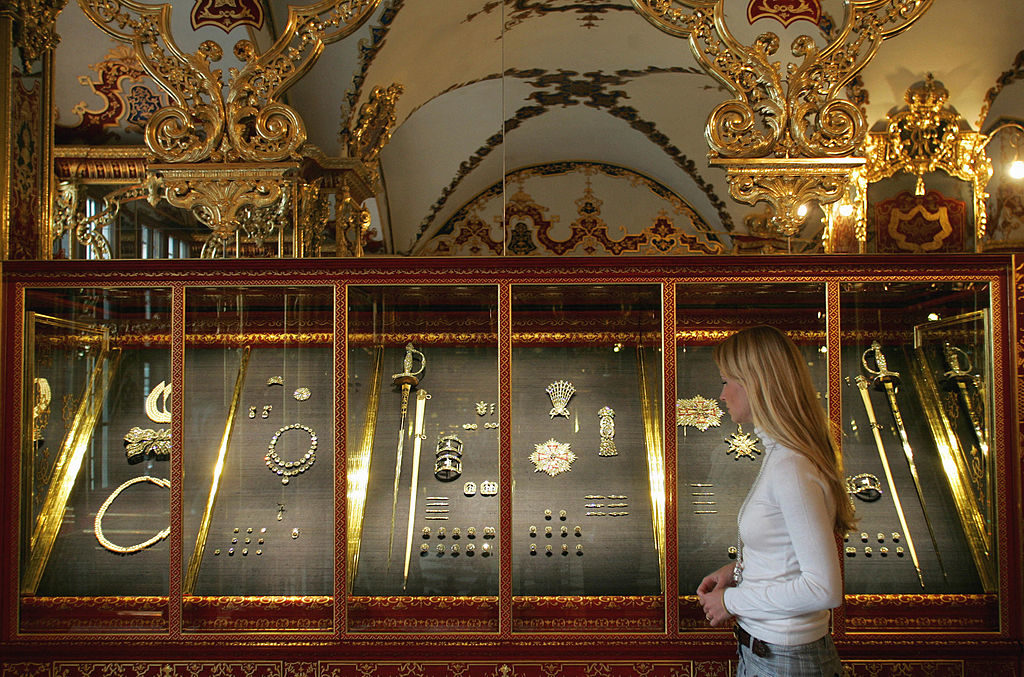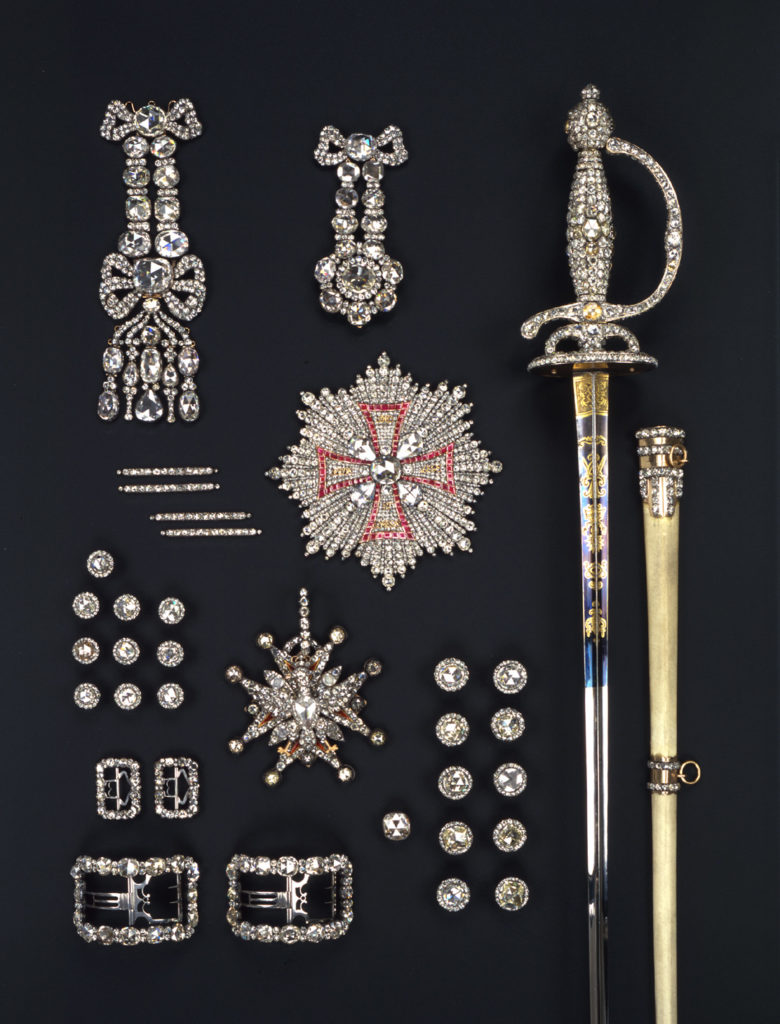Art World
A Burnt-Out Car, a Bigger Gang, and No Insurance: New Details Emerge in the Frantic Hunt for Dresden’s Treasure Thieves
Days after the robbery, the thieves are still at large but the museum has reopened.

Days after the robbery, the thieves are still at large but the museum has reopened.

Kate Brown

Dresden’s Green Vault remains a closed-off crime scene while the rest of the Royal Palace museum reopened to the public on Wednesday, November 27. Police continue to search for evidence as they hunt for the thieves who robbed the Green Vault of 11 pieces of Baroque jewelry early on Monday.
With each passing day, fears are growing that the pieces may be broken up. The heist seems to be the work of professionals, and officials are concerned that the pieces will be dismantled, with diamonds and other precious stones re-cut and then sold.
According to the director of Dresden’s State Art Collections, Marion Ackermann, the stolen items are “priceless.” So priceless that they were not insured. According Saxony’s finance minister, the lack of insurance is standard practice because the premiums tend to exceed the cost of repairing any potential damages. The royal jewels taken include a sword with a diamond-encrusted handle, diamond shoe buckles, buttons, and hair clips, as well as a diamond necklace.
Police have established that is it likely the work of not just the two thieves caught on security camera, but of four robbers. The gang sprayed fire extinguishers to cover their tracks after breaking into the iron gate of the Royal Palace museum where they smashed a small window to gain access to the historic Green Vault, and then axing the glass vitrines that held some of the museum’s most precious and historic items.
A burned-out getaway car was found after the incident. The police are assuming the vehicle (some reports say it was an Audi A6) and another fire at an electrical box nearby to the museum are connected to the robbery. The electrical box fire caused nearby street lights and the museum to be plunged into darkness; it also meant the alarm system was not activated. Security guards spotted the thieves on security cameras and immediately notified the police, who were on the scene within five minutes. So far, a special commission set up for the investigation has received 205 tips from the public.

A woman looks at objects, including the ones robbed on Monday morning, at the Jewel room of the Green Vault State Art Collection in Dresden. Photo: AFP Norbert Millauer/Germany Out/Getty Images.
The Green Vault is one of the largest collections of Baroque treasures in Europe. It was founded by Augustus the Strong, an 18th-century prince-elector of the German state of Saxony, who was also the King of Poland.
The theft has sent ripples of insecurity through the European and international museum community. The president of the Prussian Cultural Heritage Foundation, Hermann Parzinger, told German media on Tuesday that there is “an increased threat to museums here.” Parzinger, who oversees 20 museums in the German capital, has called on the nation’s police authorities and security experts to set up a task force to address museum security in the face of “the criminal energy” behind the heist.

Diamond Rose Garniture. Stolen objects from this set include the rapier, two curved shoe buckles, a hat brim ornament, badge of the Polish Order of the White Eagle, a large diamond rose, an epaulette (a fragment remains), and up to 10 skirt buttons. Courtesy SKD.
Germany’s minister of culture Monika Grütters echoed Parzinger’s call in an interview with Düsseldorf’s Rheinische Post on Wednesday, November 27 to establish a task force to deal with the vulnerability of Germany’s collections. Many other incredibly valuable artifacts, art, and objects are housed in Germany, she notes: “In our museums there are art treasures that make up the cultural identity of our country and whose value is in the billions,” she said.
Thieves were unable to steal Dresden’s Green Diamond, which is on loan, along with other objects, to the Metropolitan Museum of Art in New York. “We are devastated by the theft of the treasures from the Grünes Gewölbe [Green Vault], which are held so deeply in the hearts of the people of Dresden, and also so important to the cultural history of the world,” said Met director Max Hollein in a message of support to Dresden.